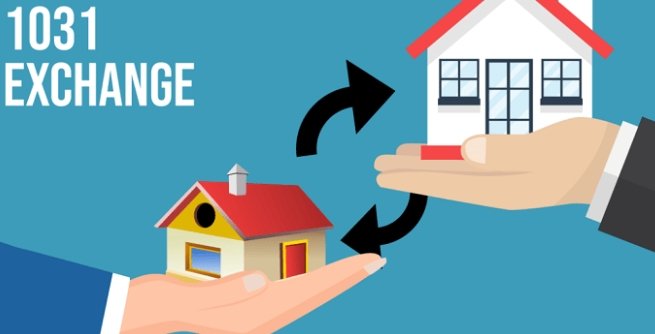When it comes to building wealth through real estate, few tools are as powerful—or as underutilized—as the 1031 exchange. Known formally as a Section 1031 exchange under the U.S. Internal Revenue Code, this strategic move allows investors to defer capital gains taxes when they sell a property and reinvest the proceeds into a “like-kind” property. Done correctly, it can be a smart way to grow your portfolio and preserve your gains.
But here’s the thing: while the tax benefits are impressive, 1031 exchanges aren’t exactly a free-for-all. There are strict rules, rigid deadlines, and plenty of nuances. That’s why it’s critical to understand the basics and surround yourself with experienced professionals to guide you through the process.
Let’s break down the essentials and explore how a 1031 exchange can help you expand your real estate empire without paying a hefty tax bill upfront.
What Is a 1031 Exchange?
At its core, a 1031 exchange allows real estate investors to swap one investment property for another while deferring the capital gains taxes typically due after a sale. Instead of cashing out and paying taxes, you roll those profits into a new property, preserving more capital to reinvest.
The term “like-kind” might sound limiting, but in practice, it’s fairly flexible. You can exchange an apartment building for a retail space, a vacant lot for an office building, or even a duplex for another multi-family rental—as long as both properties are held for investment or business purposes.
The result? More capital stays in play, fueling portfolio growth and wealth accumulation.
Why Use a 1031 Exchange?
Taxes eat into profits. It’s as simple as that. If you sell an investment property outright, you could be liable for significant capital gains taxes—especially if the property has appreciated over time. Depending on your income bracket and state taxes, your tax bill could be 15%, 20%, or even more.
A 1031 exchange legally defers those taxes, allowing you to:
- Reinvest More: By keeping 100% of your equity in the deal, you can afford a larger or higher-performing replacement property.
- Build Wealth Faster: With more capital working for you, your investments can grow more efficiently.
- Consolidate or Diversify: Exchange multiple small properties for one large one—or vice versa—to better align with your strategy.
Whether you’re looking to expand your portfolio, increase your cash flow, or shift to a more hands-off property, a 1031 exchange can help you do it more tax-efficiently.
Timing Is Everything: The 1031 Timeline
Here’s where things get a bit more technical. A 1031 exchange isn’t something you want to DIY. The IRS enforces a strict timeline, and any misstep can disqualify the entire exchange.
There are two key deadlines to remember:
- 45-Day Identification Window: Once you sell your original property, you have exactly 45 days to identify up to three potential replacement properties (or more, if certain conditions are met).
- 180-Day Completion Window: From the sale date of your relinquished property, you have 180 days to close on the purchase of the new property.
These are calendar days—not business days—and the clock starts ticking the moment the first property closes.
Because of this, planning is essential. It’s a good idea to begin scouting potential replacement properties before the sale of your original one is finalized.
Compliance and Professional Help
The rules surrounding 1031 exchanges can be tricky, and any misstep can nullify the tax deferral benefit. That’s why working with a qualified intermediary (QI) is not only advised—it’s required. A QI acts as the neutral third party who handles the transaction, receives the funds, and ensures the exchange remains compliant with IRS guidelines.
Other professionals you may need include:
- Tax Advisors: To ensure the exchange fits your overall financial plan and to avoid surprises come tax time.
- Real Estate Agents: With experience in investment property transactions and understanding of local markets.
- Legal Counsel: Especially for complex or high-value exchanges that may require extra attention to contract terms and ownership structures.
Attempting a 1031 exchange without expert help is like trying to land a plane without a pilot. Possible? Maybe. Wise? Not really.
Key Considerations Before You Exchange
Before jumping into your first 1031 exchange, keep the following in mind:
- You can’t touch the money. Once you sell your property, the proceeds must be held by the QI—any direct receipt of funds by you will trigger taxation.
- Personal property doesn’t qualify. You can’t exchange your primary residence or vacation home unless specific conditions are met.
- Depreciation recapture still applies. While capital gains can be deferred, depreciation recapture may be taxed unless carefully handled.
- Eventually, taxes come due. The 1031 exchange is a deferral strategy, not a forgiveness one. However, some investors continue exchanging properties throughout their lifetime, with heirs receiving a stepped-up basis that eliminates the deferred taxes altogether.
Final Thoughts
Used wisely, a 1031 exchange is more than just a tax deferral—it’s a strategic tool for building lasting wealth. It lets you level up your real estate investments without losing momentum to taxes, giving you more financial power to pursue your long-term goals.
But timing, compliance, and expertise are everything. So if you’re considering a 1031 exchange, take the time to understand the rules, and partner with professionals who can help you navigate the process with confidence.
Because in the world of real estate, knowing how to defer now can mean thriving tomorrow.
Let me know if you’d like a visual timeline of a 1031 exchange, a case study example, or a list of common mistakes to avoid.




